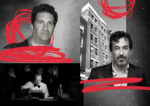Trending
Crown Heights gets tarnished
Stunning but troubled area sees prices drop nearly 27%
Crown Heights, a multicultural Brooklyn neighborhood with stunning architecture but a troubled history, is showing the impact of the recession in stalled residential sales, boarded-up homes and commercial vacancies popping up with increasing frequency in recent months.
While the area continues to beckon bargain hunters eager for deals on brownstones, many of those would-be buyers now struggle to get mortgages.
In the first quarter of this year, the total number of sales for houses, co-ops and condominiums in Crown Heights dropped to 40, compared to 75 sales for the same period in 2008, according to data from Streeteasy.com.
The average price for a Crown Heights home dropped nearly 27 percent, from $493,700 in the first quarter of last year, to $363,114 in the first quarter of 2009.
By comparison, Brooklyn as a whole saw the average sale price for a home fall just over 10 percent over the same time frame, while total sales volume dropped nearly 51 percent.
Before the recession, Crown Heights was a lower-priced alternative for New Yorkers priced out of Park Slope and other brownstone neighborhoods. It offered elegant turn-of-the-century homes for a relatively affordable price, as well as proximity to subway lines and amenities like Prospect Park, the Brooklyn Museum of Art and Brooklyn Botanic Garden.
And the current downturn hasn’t quelled interest in the neighborhood. But while Crown Heights still attracts plenty of house hunters, many of them can’t get financing, said Kathryn Lilly, a broker from Prudential Douglas Elliman.
The emerging area appeals to self-employed entrepreneurs, she noted.
Lilly is marketing two high-end homes, including a pristine 3,900-square-foot mansion built by George Brower in 1899 near the Brooklyn Children’s Museum, an area considered the gold coast of Crown Heights.
Unlike many houses on the market, the mansion at 1094 Park Place has been meticulously upgraded and is in excellent condition, she said.
The house had already been on the market when Lilly got the listing in October. Priced at $1.345 million, the house “is not getting the interest I was hoping for,” Lilly said. “It’s the nature of the market.”
Crown Heights is home to diverse cultures. Along Eastern Parkway, a tree-lined boulevard designed by Frederick Law Olmsted, the West Indian Carnival Parade attracts hundreds of thousands of people each year, reflecting the large West Indian population. The parkway also houses the worldwide headquarters of the Chabad-Lubavitch movement, a branch of Hasidic Judaism, and a growing community of Hasidim lives mainly south of the boulevard.
The two groups have clashed. In 1991, Crown Heights made history when a riot pitted Hasidic Jews against African-Americans and Caribbean blacks. Last year, the area captured headlines again when a few racially tinged skirmishes cropped up.
Compared to neighboring Bedford-Stuyvesant, Crown Heights has a larger stock of brownstones and other late 19th- and early 20th-century homes with original details intact, said Alexander Gurevich, a broker with Fillmore Real Estate, who recently marketed a condominium at 1296 Dean Street that was created from a gut-renovation of a five-story 1899 limestone house.
Gurevich said boarded-up homes are starting to show up in some of the more desirable sections, such as on President Street on the south side of the neighborhood.
“Five years ago, you wouldn’t have seen that,” he noted.
In 2008, there were 51 first-time foreclosures in Crown Heights, the equivalent of .1 percent of total households in the neighborhood — 152 percent higher than Brooklyn as a whole for scheduled foreclosures, according to data from PropertyShark.
Even before the recession, the commercial strip on Nostrand Avenue north of Eastern Parkway lacked restaurants, coffee shops and other retail businesses, a source of frustration among the area’s more affluent new home buyers. In recent months, vacant storefronts have popped up along the strip, said Barbara Brown-Allen, an agent with Prudential Douglas Elliman who lives on the north side.
“I don’t know if it’s the recession or [retailers] don’t realize the neighborhood’s needs,” she said. “People don’t realize the potential of the neighborhood. There’s a big demand for quality stores.”
In some cases, struggling retailers are asking landlords to forego a month or two of rent payments, said Jonathan Berman, first vice president of sales at Massey Knakal. And while he’s noticed some vacant storefronts, he doesn’t think retail vacancies are a significant problem in Crown Heights.
“In every commercial area, you expect a certain number of vacancies,” he said.
He noted the area is seeing steep price reductions on multi-family buildings. Buyers are making lower offers, being more selective about the properties they buy, and making more demands of sellers, he said.
“If your rent roll is $100,000, buyers are offering $800,000,” he said. “In the past, some areas commanded 10 times the rent roll.”
Aaron Jungreis, founder of the Rosewood Realty Group, a commercial brokerage, sees a similar trend. Compared to a year ago, prices for elevator buildings are 10 to 15 percent lower, and fewer buyers are shopping for buildings.
“Now when I have a building, instead of 30 to 40 buyers, I have three or four,” he said. However, he noted, “a deal will still get done.”
Many buyers of apartment buildings in Crown Heights also live in the neighborhood, and Jungreis thinks that will help the area ride out the downturn.
“A lot of the people I sell to live within five blocks of the building,” he said. “They don’t mind investing a lot in the area because it’s part of their business.”




